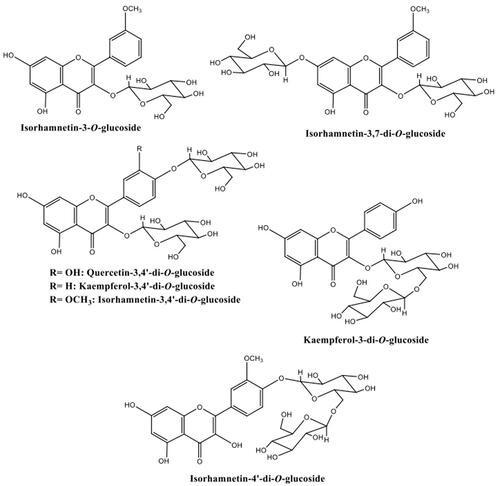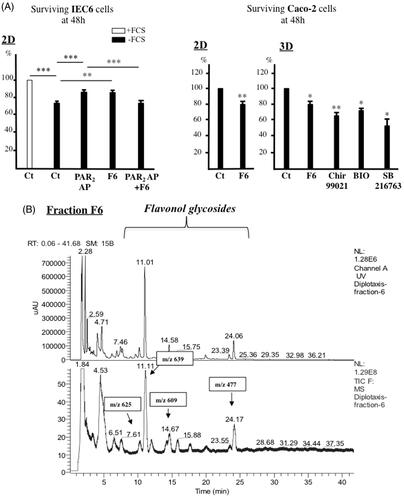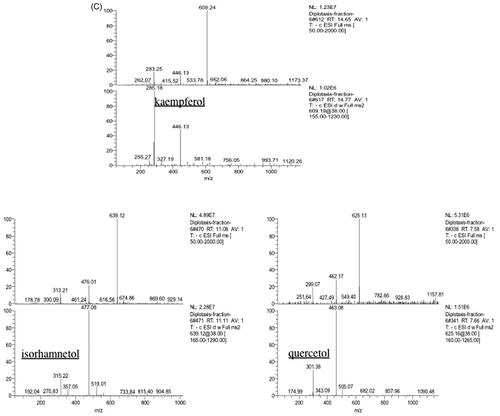Figures & data
Figure 1. Flavonoids from D. harra flowers modulate GSK3β. (A) Serum-starved IEC6 cells were stimulated with PAR2 AP (100 μM) for 1 h and then incubated for 1 h with methanol extracts from D. harra leaves, flowers or roots (100 μg/mL) or ethanol/water (10%) as control. The variations of the inhibited form of GSK3β (Pser9 GSK3β) were analyzed with total protein GSK3β by Western blot. Representative of three independent experiments. (B) Flavonoid-enriched fractions of D. harra flowers, F6 and F3 (100 μg/mL), were incubated with IEC6 cells as described in (A). Variations of Pser9 GSK3β were analyzed after this treatment in IEC6 cells previously stimulated with PAR2 AP or control peptide (100 μM). Actin is shown as loading control. Representative of two independent experiments.
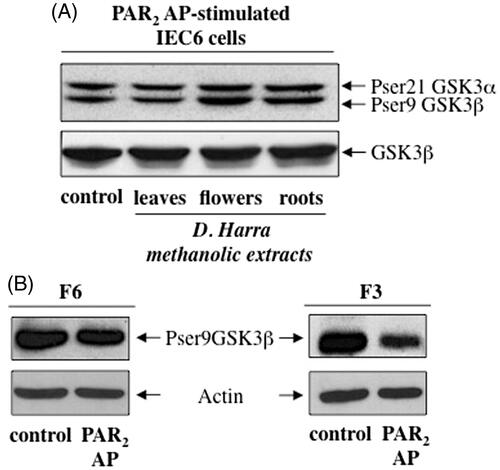
Figure 2. The flavonoid-dependent modulation of GSK3β is regulated by PKC. Serum-starved IEC6 cells were stimulated with PAR2 AP (100 μM) for 1 h and then incubated for 1 h with the flavonoid-enriched fraction F6 from D. harra flowers (100 μg/mL) or ethanol/water (10%) as control. In A, Ptyr307PP2A (inhibited form) and Pser473Akt (activated form) were analyzed by Western blot. Actin is shown as loading control. Representative of two independent experiments. In B, PAR2 AP-stimulated IEC6 cells were treated with 0.2 μM PKC inhibitor Gö6776 or DMSO (solvent) for 15 min before F6 addition. Pser9 GSK3β and total GSK3β were analyzed by Western blot. Representative of two independent experiments.

Figure 4. Flavonol glycosides from D. harra are cytotoxic for inflammatory and cancer intestinal cells. (A) The flavonol glucosides-enriched fraction L12 from F6 was incubated with serum-starved IEC6 and Caco-2 cells at 100 and 150 μg/mL, respectively. 24 h after surviving cells were measured with MTS. Data are mean ± S.E.M. (n = 2 to 3), comparison to the control: p < 0.05*, p < 0.01**. (B) Full-MS spectrum of the L12 fraction and of its two main ions.
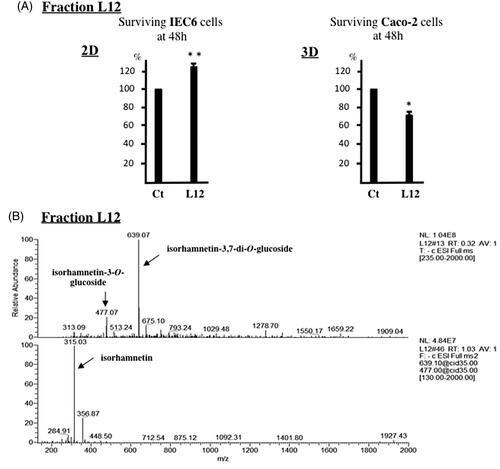
Figure 5. Isorhamnetin-3,7-di-O-glucoside is cytotoxic for inflammatory and cancer intestinal cells. Isorhamnetin-3,7-di-O-glucoside (50 μg/mL) purified from L12 or DMSO/water (control, 0.25%) was incubated with serum-starved IEC6 and Caco-2 cells. 24 h after surviving cells were measured with MTS. Data are mean ± S.E.M. (n = 2 performed in duplicate (3D) or triplicate (2D)), comparison to the control or between assays: p < 0.05*, p < 0.01**.
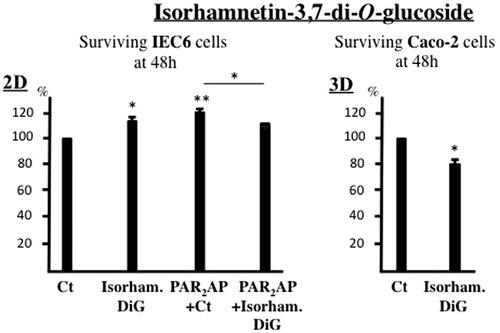
Figure 6. Chemical structure of flavonol glycosides in F6 fraction from D. harra flowers. Isorhamnetin-3-O-glucoside; isorhamnetin-3,7-di-O-glucoside; quercetin-3,4′-di-O-glucoside; kaempferol-3,4′-di-O-glucoside; kaempferol-3-di-O-glucoside; isorhamnetin-4′-di-O-glucoside and isorhamnetin-3,4′-di-O-glucoside.
